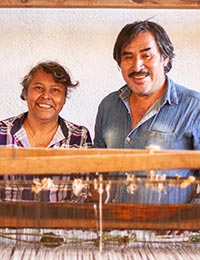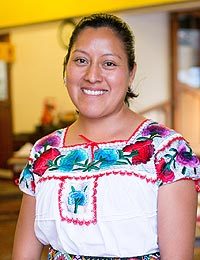Brief history of area rugs
Area rugs have served as home décor essentials since the beginning of civilization. Crudely woven reed rugs and animal hide rugs provided the first flooring, sitting, and sleeping surfaces. For many families, the area rug was the household's most valuable possession.
As the art of rug making evolved over the millennia, area rugs transformed into artistic canvases. Today, the finest handmade area rugs are treasured as prized objects d'art.
The oldest surviving area rug, the "Pazyryk" carpet, was discovered in 1949 by a Russian archeologist during the unearthing of a Siberian burial site. Long frozen in ice, the carpet's fiber, color, and designs were incredibly well preserved. Dating back to the 5th Century BC, the Pazyryk carpet is considered an exceptional work of Scythian art, featuring exquisite details, symmetrical patterns, rich colors, and a hand-knotted technique still popularly used today.
Before the discovery of the Pazyryk carpet, the oldest known rug was the King of Persia's legendary "Spring of Khosrows" carpet; an enormous hand-knotted area rug made of wool, silk, gold, silver, and precious stones. Dating back to about 550 BC, it measured 400' by 100', and weighed several tons. The King is said to have strolled along that seemingly endless, bejeweled carpet in the wintertime to savor its many springtime scenes - birds in flight, flowers in full blossom, ripe fruits, and a broad "green meadow" border believed to have been designed of solid emeralds.
Area rugs continue to play a significant role in the artistic traditions of cultures around the globe, from the geometrically complex Ayacucho designs of Peru, to the wildly contemporary sisal rugs of Brazil, to the intricate floral motifs of Indian Kashmiri rugs, to the world famous Persian rugs of Iran.
Interior designers often recommend area rugs as the fastest and simplest design element available to totally reinvent a room or to revitalize existing décor, while at the same time providing warmth and depth, sound absorption, and floor surface protection.
Selecting an area rug
Area rugs are made in a wide variety of styles, colors, patterns, materials, and prices. Area rugs provide attractive, practical floor covering, often at a lower cost than wall-to-wall carpeting. Novica offers a hundreds of affordable area rug styles, handmade in some of the world's most popular rug making regions, at prices ranging from $50 to $1,000. The styles Novica offers vary widely; from the patterned, pictorial, and geometric wool rugs of the Andes, to the contemporary sisal rugs of Brazil, to the rich Dhurries and Kashmiri area rugs of India, to the rugged, rustic designs of central and southern Mexico.
Area rug decorating tips
Interior designers suggest three basic methods of decorating with area rugs: the "focal point" method, the "accessory" method, and the "practical" method.
Area rugs as focal points
Some designers recommend making an area rug the foundation of your interior, then working out from there to select furniture, décor, and paint to compliment (and not overpower) the rug. A bold, eye-catching rug easily becomes the focal point of a room. A large pictorial, medallion, geometric, or brightly colored rug, for example, looks best when the rest of the room's décor is relatively neutral, allowing the eye to be drawn to the artistry of the rug. Such showy styles are ideally placed in spaces where they do not compete for attention with other large and bold works of art and décor.
Area rugs as décor accessories
For rooms with busy interiors, interior designers generally recommend delicately pattered or symmetrically designed area rugs, with subdued coloring. Such area rug styles compliment a room without overpowering existing artistry. For rooms with fireplaces, where the fireplace is intended as the focal point, repetitive, subtlety patterned rugs (as opposed to medallion or other bold styles) are ideally suited. Look for an area rug with colors that blend well with existing paint, furniture, and other design elements. Keep in mind any furniture upholstery patterns or ornate wallpaper that might go best with a subdued, non-competitive area rug design.
Area rugs as practical accessories
Remember to select an area rug that best suits your practical needs. In high-traffic areas, consider darker colors, patterns, and sturdy fabrics. Keep in mind that light colored area rugs help keep a room open and airy, while deeper colors make rooms seem cozier. With a vast selection of styles, sizes, and prices now available at the click of a mouse, it is easy to select an area rug that is beautiful, practical, and affordable.
Size and placement
Large area rugs go well in living rooms, kitchens, and large bedrooms, while smaller area rugs work best in foyers, hallways, and bathrooms. More than one area rug may be placed in the same room, as long as the colors are coordinated. Rugs of varied sizes tend to go together best; same-sized rugs tend to divide a room in halves. Rugs placed under tables should be larger than the table itself, ideally with an equal amount of border showing on all sides.
Tapestries as wall decor
Tapestries, typically more delicate and lighter weight than area rugs, can also transform rooms with beautiful infusions of hand-woven artistry. Tapestries, often bolder and larger than most paintings, should be intended as focal points. They may be easily pinned or nailed directly to the wall, or hung with curtain rods (available at most hardware stores and home improvement centers). Below are examples of Novica's extensive selection of tapestries from around the world.
Fibers
Handmade area rugs are made of a variety of materials. Natural fiber rugs (like those offered through Novica) are typically made of wool, silk, cotton, sisal, jute, or sea grass, whereas commercial area rugs are typically manufactured with synthetic materials. Wool and silk are commonly used in Central America, Asia, India, and the Middle East, while Sisal, jute, and sea grass rugs are most common to Mexico, Brazil, Africa, and some areas of Asia.
Wool is extremely durable. It naturally resists fire, water, and stains, and absorbs and retains dyes beautifully. Wool fibers also diffuse light, resulting in a soft, rich appearance still unmatched by synthetic wool fibers.
Silk remains a choice rug-making material, especially in Asia.
Cotton is soft and durable. It is a popular area rug fiber that that easily absorbs and retains a wide variety of dyes.
Sisal is the most popular of the plant fiber rugs (the word "sisal" has come to be used as a generic term for most plant-based rug fibers, although sisal is actually, technically, one particular type of plant fiber).
Jute is a popular rug-making material, especially in India. The strong fibers of the East Indian Corchorus olitorius and C. capsularis are also used for making mats, gunny cloth, cordage, wall hangings, and paper.
Dyes and antiquing
Some rug-makers still use natural materials to dye rug fibers. The indigo plant produces a beautiful blue hue; madder root and dried cochineal insects are both used to produce reds of many shades; tree bark and nutshells produce a variety of tan and brown hues; and various leaves, pomegranates, and flower petals provide a broad palate of dye colors.
Over the past century of rug making, commercial dyes have gained considerable popularity. The original aniline chemical dyes, derived from coal tar, tended to speed the oxidation of rug fibers, however, resulting in premature aging and excessive wear. The King of Persia actually banned aniline dyes from the Persian rug-making process, aiming to preserve his region's rich rug-making heritage. Many chemical dyes today are far less damaging than the original aniline dyes. Experts agree, however, that naturally dyed fibers remain of greater artistic interest and value.
Natural dyes do also increase the oxidation of fibers, but at a much slower, "natural" rate than chemical dyes. This slow aging process is desirable; a gently aging carpet with evenly fading colors is highly prized, and often more valuable than a new carpet.
On the other hand, in the past half century, chemical "antique washing" of both natural and artificial fibers has become increasingly prevalent, purposefully speeding the aging process to produce softer-hued, "antiqued" rugs, so that buyers can enjoy the desirable fading and wear so often associated with expensive, antique heirloom area rugs.
Handmade vs. machine made
Natural fibers absorb and retain dyes in a "natural" way, resulting in an "authentic" appearance that has not been matched by synthetic fabrics. To the novice eye, machine made, synthetic area rugs may appear remarkably similar to handmade rugs, but there is really no comparison between a mass-manufactured synthetic rug, and the exquisite hue, feel, artistry, and history of a natural fiber rug woven or knotted by hand.
The caring and cleaning of area rugs
Most area rugs, especially those made of wool and silk, can last a lifetime if they are properly maintained. General wear, mildew, dirt, moths, and carpet beetles are the greatest threats to the longevity of rugs, but the simplest care procedures, if consistently followed, will do wonders to help preserve a rug for generations. Periodic professional cleaning by a rug expert, ideally on a yearly basis, will also help ensure the longevity of your area rug.
Padding
Protect your area rug and avoid surface slippage by using proper padding underneath. Inexpensive "underlay" pads will keep your rug in place, reduce wear and tear, improve noise absorption, and provide extra cushioning. Rug pads can be purchased at most local hardware stores, as well as at home improvement centers such as Home Depot.
Spills
Treat all spills immediately to reduce the possibility of staining, and to remove moisture from the rug (moisture and mildew rapidly decay natural fibers). Clean spills with white paper towels, beginning at the outside edges of the spill (to prevent spreading), and work in from there. Area rugs with spills, stains, and other damage should be promptly attended by a professional cleaner.
Rug rotation
A secret to insuring a longer life for area rugs is to rotate them regularly, especially in high traffic areas and brightly lit areas, to evenly distribute wear patterns and color fading.
Storage
Prior to long-term storage, rugs should first be professionally cleaned, mothproofed, and wrapped in a clean, breathable material, helping to prevent mildew.
Featured master weavers
Brazil
Brazil is well known for a variety or rugs, including wool and cotton rugs from the Jequitinhonha River Valley, and sisal fiber rugs in a wide variety of traditional and modern designs, from various regions of the country. True sisal rugs are made from the sisal cactus plant. Sisal rugs are intended for indoor use; water and weathering quickly deteriorate the fibers if placed outdoors.
Peru
Rug and tapestry weaving is a well-honed art in Peru, with each region producing its own unique style, with designs in some regions typically incorporating images of native flora and fauna, while in other regions local designers focus on complex, technically accomplished 3-D geometric patterns.
Mexico
Mexico's diversity of indigenous cultures and artistic styles has resulted in a wide variety of traditional textiles arts. Among the most popular area rugs of Mexico are those produced in Teotitlan del Valle, where most residents are involved in the production of "Zapotec" style wool rugs.
India
Rug weaving as a fine art form began to flourish in India in the 1500s. At that time, many Indian rug weavers were greatly influence by Persian carpet makers. Some Indian artisans traveled to study under Persian masters, while in other cases Persians came to India to help organize carpet shops and train workers in the carpet making process.
Area rug terminology
All-over design
Continuous motifs spread symmetrically across a rug.
Border
The border frames the main "field" of the rug, and can vary in width and design.
Cloth-backed rug
Indian and Chinese tufted rugs are often backed with a cloth panel to hide the tufts.
Color
Regardless of a rug's motif, the background and border usually consist of a dominant base color. "Background Color" refers to the underlying color of the rug. "Border Color" refers to the dominant color along the rug's border.
Dhurrie
Dhurries are a popular area rug style from India. They are flat-woven, and typically made of cotton or wool.
Field
The main part of a rug's design, which may be surrounded by a border or series of borders.
Flat-weave
Flat-weave rugs are woven (resulting in flat pile), as compared to knotted rugs, which feature raised pile. Kelim or brocade styles are examples of flat weaves.
Foundation
The foundation is composed of the horizontal and vertical "warp" and "weft" strings - the basic structure or skeleton of the rug that will be woven around or knotted upon. The foundation is typically made of wool, silk, or cotton.
Garden Design
Floral motif panels
Kilim
Kilims are flat-woven, tapestry-like rugs.
Knotted
Wool, cotton, or silk yarn is looped under the warp threads, then tied (knotted) and cut. There are various methods of knot tying in different regions; each style carries its own name.
Layout
There are three main types of layout: "medallion," "one-sided," and "patterned." Medallion layouts feature a centered motif, typically surrounded by a border pattern. The medallion is usually a large design of varying styles - typically a diamond, octagon, or hexagon, usually found in the central region of a rug. One-sided layouts are generally rugs featuring a prominent image or illustration (a one-sided rug can only be oriented in one direction, or the design will appear upside-down or sideways). Pictorial layouts are generally "one-sided," realistic portrayals of people and animals. Patterned layouts are typically either "curvilinear" (where the shapes and lines are smooth, usually achieved through a high knot density), or "geometric," where the patterned shapes are usually composed of straight, jagged lines and angles, especially right angles, diagonals, and triangles.
Nap
The cut ends of each knot (the actual top surface of a knotted area rug).
Pile
The pile is the main material of the rug (the nap or tufts remaining after the knots are trimmed).
Plain weave
The simplest style of interlacing the main weaves through the warp and weft threads.
Selvedge
The sides of the rug are called the selvedge - the actual edge of the warp and weft.
Senneh knot
The asymmetrical Persian knot is also known as the Senneh knot.
Soumak
An embroidered appearance achieved through a flat-weaving style that is also known as "weft wrapping."
Warp and weft
The warp is made of vertical threads set in place before weaving begins. The weft is made of threads woven horizontally through the warp. The warp and weft are the symmetrical foundation, or skeleton, that the rug will then be woven or knotted upon.
































